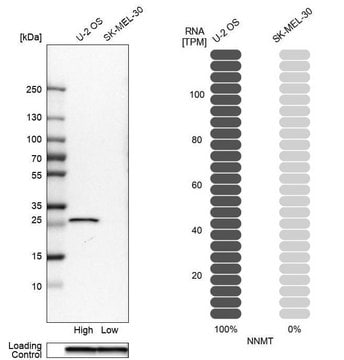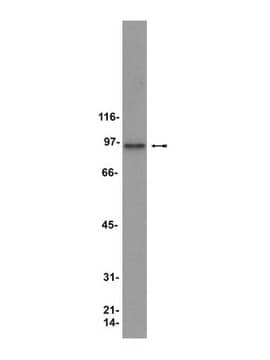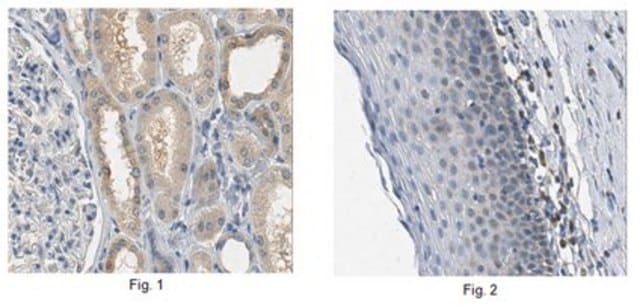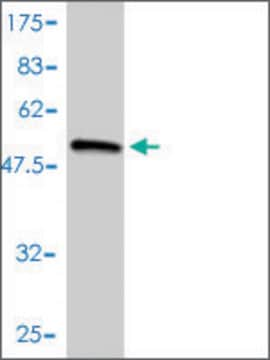MABC1106
Anti-Hsp90 alpha Antibody, clone 1G6-D7
clone 1G6-D7, from mouse
Synonim(y):
Heat shock protein HSP 90-alpha, Heat shock 86 kDa, HSP 86, Lipopolysaccharide-associated protein 2, LAP-2, LPS-associated protein 2, Renal carcinoma antigen NY-REN-38
About This Item
Polecane produkty
pochodzenie biologiczne
mouse
forma przeciwciała
purified immunoglobulin
rodzaj przeciwciała
primary antibodies
klon
1G6-D7, monoclonal
reaktywność gatunkowa
human
opakowanie
antibody small pack of 25 μg
metody
ELISA: suitable
immunoprecipitation (IP): suitable
inhibition assay: suitable
western blot: suitable
izotyp
IgG1κ
numer dostępu NCBI
numer dostępu UniProt
docelowa modyfikacja potranslacyjna
unmodified
informacje o genach
human ... HSP90AA1(3320)
Powiązane kategorie
Opis ogólny
Specyficzność
Immunogen
Zastosowanie
ELISA Analysis: A representative lot detected Hsp90 alpha in ELISA applications (Zou, M., et. al. (2017). Oncogene. 36(15):2160-2171).
Affects Function Analysis: A representative lot blocked parental MDA-MB-231 cell invasion in a dose-dependent manner. (Zou, M., et. al. (2017). Oncogene. 36(15):2160-2171).
Western Blotting Analysis: A representative lot detected Hsp90 alpha in Western Blotting applications (Zou, M., et. al. (2017). Oncogene. 36(15):2160-2171).
Inhibits Activity/Function Analysis: A representative lot inhibited both de novo tumor formation and expansion of already formed tumors in mice. (Zou, M., et. al. (2017). Oncogene. 36(15):2160-2171).
Jakość
Western Blotting Analysis: 1 µg/mL of this antibody detected Hsp90 alpha in MDA-MB-231 cell lysate.
Opis wartości docelowych
Postać fizyczna
Inne uwagi
Not finding the right product?
Try our Narzędzie selektora produktów.
Certyfikaty analizy (CoA)
Poszukaj Certyfikaty analizy (CoA), wpisując numer partii/serii produktów. Numery serii i partii można znaleźć na etykiecie produktu po słowach „seria” lub „partia”.
Masz już ten produkt?
Dokumenty związane z niedawno zakupionymi produktami zostały zamieszczone w Bibliotece dokumentów.
Nasz zespół naukowców ma doświadczenie we wszystkich obszarach badań, w tym w naukach przyrodniczych, materiałoznawstwie, syntezie chemicznej, chromatografii, analityce i wielu innych dziedzinach.
Skontaktuj się z zespołem ds. pomocy technicznej








